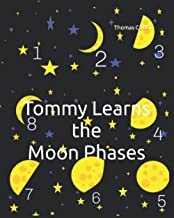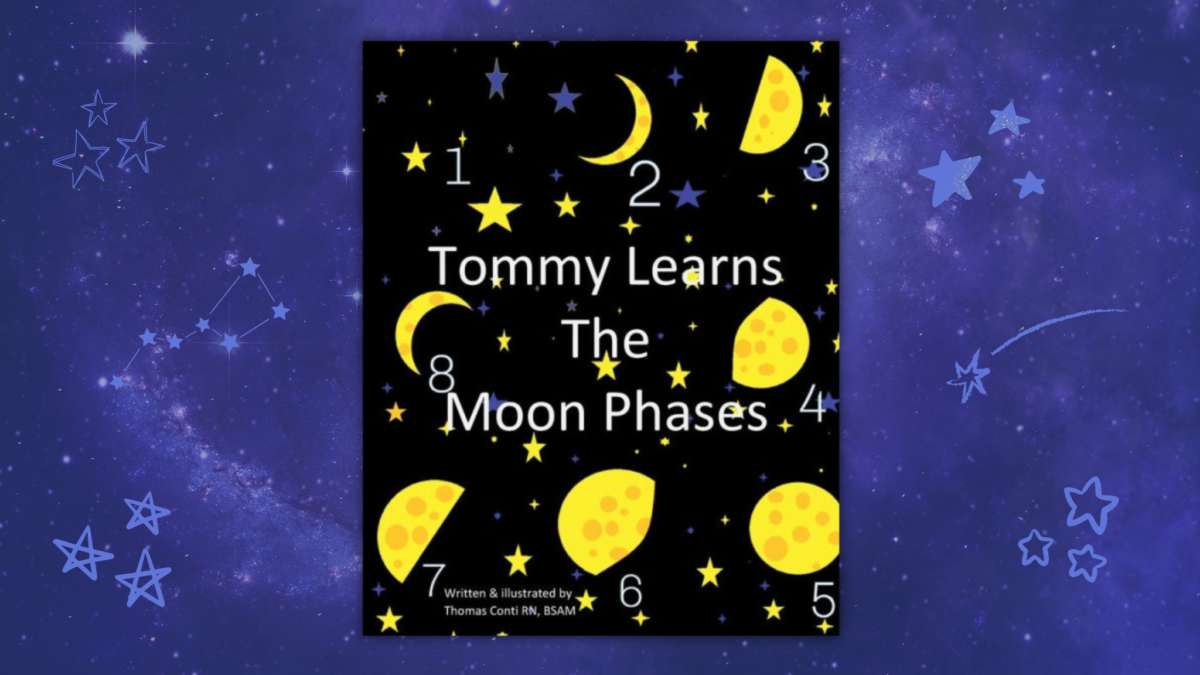Tommy Learns the Moon Phases by Thomas Conti
What's It About?
Kids have been looking up at the stars and the sky for, well, as long as there have been kids. But do they really understand what they are looking at?When it comes to the moon, well, they know it’s the moon, but why does it look different every night?
Thomas Conti, a Registered Nurse and Herbalist by trade, has written books on wild edible plants, alternative healing and positive thinking, as well as children’s books, often based on nature and its great values. Now Conti too is turning his attention upward — and his new book, Tommy Learns the Moon Phases, is a delightful, visually attractive and easy way for children to learn about the moon’s eight phases. Noting that the first things kids see are the stars, he writes:
“That’s not all that catches the eye.
There is something big reflecting lights.
It’s the moon glowing ever so bright.
Changing its form from night to night.”
But for young children, are they able to grasp the difference between whether the moon is actually changing shape every night or whether they simply are viewing it from a different angle, based on the amount of illumination it receives as it rotates around the sun? Writes Conti:
“The moon goes through eight phases,
That we can see as the moon’s glow changes.
Eight phases over about twenty-nine days.
Each phase gives the moon a new face!”
The book has limited text, to keep things simple for children hoping to grasp the concept. But the illustrations are plenty, including a full page that shows the different shapes of the moon in each of its eight phases.
Children need not fret if they glance at the night sky some nights and can’t see the moon. That’s because it’s probably a New Moon, in which the moon is not visible and the stars capture the spotlight.
The author takes readers through each phase, likening one to a piece of pie and explaining the meaning of the word “waxing,” as in Waxing Gibbous.
Readers will get a general idea, from the brief description and clear visuals, of each phase:
- New: Cannot see the moon.
- Waxing Crescent: A thin crescent of light on the right.
- First Quarter: A half moon.
- Waxing Gibbous: Between a half moon and full moon, growing larger.
- Full: Completely illuminated.
- Waning Gibbous: Between a full moon and a half moon, getting smaller.
- Third Quarter: A half moon.
- Waning Crescent: A thin crescent of light on the left.
For a book that is fun and easy for children to process, check out Tommy Learns the Moon Phases. Young ones have always been fascinated with the stars, and this simple combination of light, engaging text and informative illustrations will provide valuable learning.
By the time the book is finished, Conti encourages all children to “aim for the stars!”
Tommy Learns the Moon Phases is available for purchase on Thomas Conti’s website, as well as on Amazon.
Buy this Book!
Amazon




